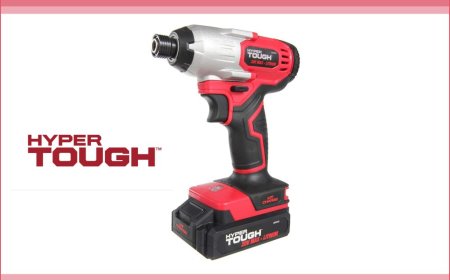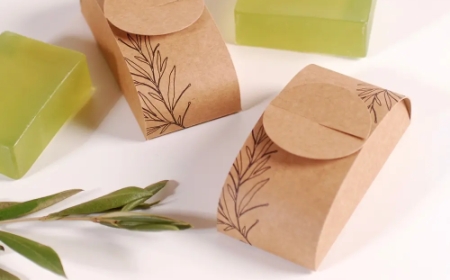Stump Grinding: A Complete Guide to Removing Tree Stumps Safely
Stump grinding is the perfect blend of speed, efficiency, and minimal yard disruption. Whether you’re tired of tripping over that old stump or want to prep your yard for a fresh look, grinding is the way to go. If you value your time, safety, and lawn—hire a pro. But for smaller jobs, a well-prepared DIY approach can work too.

Tree gone but the stump still sitting there like a sore thumb? Youre not alone. Tree stumps can be an eyesore, a safety risk, and even a home for pests. Thats where stump grinding comes in. Its one of the most efficient ways to get rid of leftover stumps and reclaim your yard spacewithout tearing up your entire lawn.
What Happens If You Leave a Tree Stump?
Regrowth Issues
Many stumps will try to regrow. Youll see shoots popping up like unwanted weeds unless you deal with the stump properly.
Pest and Insect Problems
Old stumps attract termites, carpenter ants, beetles, and even rodents. These can quickly spread to nearby trees or your home.
Safety and Tripping Hazards
A hidden stump can be a major trip hazardespecially for kids, pets, or lawn equipment.
Aesthetic Concerns
Lets be honestno one wants a random stump ruining their landscaping vibes.
What Is Stump Grinding?
How the Grinding Process Works
Stump grinding involves using a high-powered machine that grinds the stump into small wood chips. The grinder has a rotating cutting wheel with sharp teeth that shred the stump bit by bit.
Depth and Scope of Grinding
Typically, grinders go about 412 inches below the surface, which is enough to eliminate visible parts and allow grass or plants to grow over the spot.
Equipment Used in Stump Grinding
Stump grinders vary from small, hand-held units to large, ride-on machines, depending on stump size and accessibility.
Stump Grinding vs. Stump Removal
Main Differences
-
Grinding shreds the stump below ground.
-
Removal pulls out the entire stump and root ball.
Pros and Cons of Grinding
Pros:
-
Faster and cheaper
-
Less damaging to your yard
-
No large hole left behind
Cons:
-
Roots remain underground
-
Not ideal for replanting in the exact same spot
When to Choose Grinding
Grinding is perfect when:
-
You want to replant nearby (not in the exact spot)
-
You need a cost-effective solution
-
You want minimal yard disruption
The Stump Grinding Process
1. Site Preparation
Clear the area of rocks, debris, or fencing. Mark any underground utilities before starting.
2. Using the Stump Grinder
The operator moves the grinder back and forth across the stump, lowering it gradually until its below ground level.
3. Cleanup and Mulching
The resulting wood chips can be collected or spread over the area as mulch.
Types of Stump Grinders
Hand-Guided Grinders
Ideal for small stumps or tight spaces. Operated manually.
Rear-Hitch Grinders
These attach to trucks or trailers and are pulled to job sites.
Skid Steer Grinders
Mounted on skid steersgreat for large stumps and commercial jobs.
PTO Grinders
Attach to tractors and are perfect for farms or large properties.
How Deep Does a Stump Grinder Go?
Typical Depth
Most grinders go 4 to 6 inches below groundenough for most uses.
Deeper Grinding Options
You can request deeper grinding (up to 12 inches) if you want to plant sod, flowers, or bushes over the area.
Dealing with Large or Old Stumps
Larger stumps may need multiple passes or industrial equipment.
Cost of Stump Grinding
Price Per Stump vs. Per Inch
-
Small stumps: $75$150
-
Large stumps: $150$400
-
Some charge by diameter ($3$5/inch)
Factors That Affect Price
-
Stump size
-
Root complexity
-
Access to the site
-
Type of tree wood
DIY Cost vs Hiring a Professional
DIY may cost $100$200 in rental fees, plus labor and time. Professionals typically do it faster, safer, and cleaner.
DIY Stump Grinding
Renting Equipment
Local hardware stores offer stump grinders for rent by the hour or day. Always check the size of the stump first.
Safety Precautions
-
Wear goggles, gloves, boots, and hearing protection
-
Watch for flying debris
-
Never operate alone
When to Avoid DIY
Avoid DIY if:
-
The stump is large
-
Its near buildings, sidewalks, or utilities
-
Youve never used a grinder before
Hiring a Professional Stump Grinding Service
What to Expect
Pros assess the stump, bring the right machine, and finish the jobusually in under an hour for small to mid-sized stumps.
Questions to Ask
-
Do you remove the chips?
-
How deep will you grind?
-
Are you insured?
How to Choose the Right Company
-
Look for local reviews
-
Ask about equipment types
-
Confirm pricing upfront
What to Do With the Wood Chips
Mulching Garden Beds
Wood chips make excellent mulch. Spread them under trees, shrubs, or flower beds.
Composting
Mix with greens like food scraps or grass for a nutrient-rich compost.
Disposal Options
Some companies will haul them off, or you can bag and leave them for city pickup (check your local rules).
Aftercare for Ground Stump Area
Filling the Hole
Use the leftover chips or fill with topsoil to level the area.
Reseeding or Replanting
Wait a few weeks before planting to allow the area to settle. Choose grass or shallow-rooted plants.
Preventing Regrowth
Although rare after grinding, keep an eye out for root sprouts. Remove them quickly.
Environmental Benefits of Grinding
Less Invasive Than Removal
No need to dig up massive roots or leave a gaping hole in your yard.
Promotes Soil Health
Wood chips decompose and enrich the soil naturally.
Recycles Organic Matter
Better than tossing into a landfillnature goes full circle!
Common Mistakes to Avoid
-
Grinding too shallow
-
Ignoring leftover surface roots
-
Not marking underground utilities
-
Skipping protective gear during DIY
Conclusion
Stump grinding is the perfect blend of speed, efficiency, and minimal yard disruption. Whether youre tired of tripping over that old stump or want to prep your yard for a fresh look, grinding is the way to go. If you value your time, safety, and lawnhire a pro. But for smaller jobs, a well-prepared DIY approach can work too.
FAQs
1. Can I plant a new tree where I ground a stump?
Yes, but not directly in the same spot. Roots may still interfere with growth. Shift the planting area slightly.
2. Will grinding remove all tree roots?
No, it removes the visible stump but not the entire root system. Remaining roots will eventually decay.
3. How long does stump grinding take?
Most small-to-medium stumps take 3060 minutes. Larger stumps can take longer.
4. Is stump grinding noisy?
Yes, it involves heavy machinery. Its best done during the day to avoid disturbing neighbors.
5. Does it leave a mess?
Grinding creates a lot of wood chips. Most services include cleanup, or you can repurpose the mulch.







































